Prokaryotic cells are the smallest living entities on the planet. They are small, simple cells with uncomplicated living mechanisms. This simplicity is due to the absence of multiple organelles with complex structures and more complex mechanisms of action. On the other hand, the eukaryotic cells have a larger framework and an intricate mechanism of living. This complexity is due to the presence of well defined, membrane-bound cellular organelles.
The prokaryotes are lower organisms that are unicellular whereas the eukaryotes can be unicellular (amoeba) or can be multicellular (higher organisms like plants, animals, fungi etc). The prokaryotic cell lacks the membrane-bound nucleus and thus the genetic material remains scattered in the form of the nucleoid. Contrarily, the eukaryotic cell has a precisely distinct nucleus to store the genetic material.
In the following content, we will discuss the general difference between these two types of cells with the help of a comparison chart along with a brief description of their respective components.
Content: Prokaryotic cells Vs Eukaryotic cells
Comparison Chart
| Basis For Comparison | Prokaryotic Cells | Eukaryotic Cells |
|---|---|---|
| Size | 0.5-3um | 2-100um |
| Kind of Cell | Single-cell | Multicellular |
| Cell Wall | Cell wall present, comprise of peptidoglycan or mucopeptide (polysaccharide). | Usually cell wall absent, if present (plant cells and fungus), comprises of cellulose (polysaccharide). |
| Presence of Nucleus | Well-defined nucleus is absent, rather 'nucleoid' is present which is an open region containing DNA. | A well-defined nucleus is present enclosed within nuclear memebrane. |
| Shape of DNA | Circular, double-stranded DNA. | Linear, double-stranded DNA. |
| Mitochondria | Absent | Present |
| Ribosome | 70S | 80S |
| Golgi Apparatus | Absent | Present |
| Endoplasmic Reticulum | Absent | Present |
| Mode of Reproduction | Asexual | Most commonly sexual |
| Cell Divison | Binary Fission, (conjugation, transformation, transduction) | Mitosis |
| Lysosomes and Peroxisomes | Absent | Present |
| Chloroplast | (Absent) scattered in the cytoplasm. | Present in plants, algae. |
| Transcription and Translation | Occurs together. | Transcription occurs in nucleus and translation in cytosol. |
| Organelles | Organelles are not membrane bound, if present any. | Organelles are membrane bound and are specific in function. |
| Replication | Single origin of replication. | Multiple origins of replication. |
| Number of Chromosomes | Only one (not true called as a plasmid). | More than one. |
| Examples | Archaea, Bacteria. | Plants and Animals. |
What are Prokaryotic Cells?
The term prokaryotic has arisen from Greek words “Pro” and “Karyon” ( Pro: ancient/primitive; karyon: nut/nucleus). As the name suggests, the evolution of prokaryotic cells is at least 3.5 billion years old. But even today they are a substantial part of human life.
These are basically cells with simple configuration, orientation and mechanism. This is because they lack membrane-bound, well-structured organelles and are not advanced as eukaryotes. Most of the microbial fauna like bacteria and archaea are prokaryotic in nature.
Even with their very tiny framework and unorganised system, they are an integral part of our lives. Not only in our surroundings, some of them even exist inside us. They have a crucial role in the agricultural and industrial sectors too. Apart from this, they might also be harmful in several circumstances, leading to diseases.
Characteristics of Prokaryotic Cells
- They are considered to be the most ancient form of life on the planet.
- Enormously small(can be 1/2 to 1/1000 times smaller than eukaryotic cell) with uncomplicated structure.
- No specified membrane-bound organelles.
- DNA of these cells are closely and densely packed together, termed as “nucleoid“. Not considered as true nucleus due to lack of nuclear membrane.
- Mostly consist of whip-like projections on the surface known as flagella for locomotion.
- Have external protrusions- pilli and fimbriae. They help the cell to adhere to the surface of other cells.
Components of Prokaryotic Cells
- Cell Wall: Provides rigidity and support for the cell.
- Cell membrane: Thin layer of protein and lipids that surrounds the cytoplasm and regulate the flow of materials inside and outside the cells.
- Ribosomes: Tiny particles on the surface of the endoplasmic reticulum(RER). They help in protein synthesis.
- Glycocalyx: This layer functions as a receptor, aids the adhesion, and provides protection to the cell wall.
- Nucleoid: It is the location where genetic material is condensed into a small packet.
- Pilus: Hair like hollow attachment present on the surface of bacteria, and is used to transfer DNA to other cells during cell-cell adhesion.
- Mesosomes: It is the extension of the cell membrane that is unfolded into the cytoplasm. Their play part in cellular respiration.
- Flagellum: Helps in movement, attached to the basal body of the cell.
- Fimbriae: Helps in attachment to the surface and other bacteria while mating. These are small hair-like structures.
- Inclusion: They are small granule like structures that facilitate the storage of carbohydrates, glycogen, phosphate, fats that can be used when needed.
Note: The prokaryotes have the special ability to go into the dormant stage for surviving in the harsh unsuitable environment. For this the generates the endospores which can bear all kinds of stresses.
Role in our lives
- The prokaryotes are prime contributors to the oxygen production process(example: cyanobacteria).
- Used in food tech industries for providing texture and flavour to different food items(Example: Streptococcus, lactobacillus etc.).
- Help in waste management by recycling the waste and reducing the organic debris into simpler inorganic components.
- Facilitate the action of digestion, peristalsis and many other metabolic activities.
What are Eukaryotic Cells?
The term eukaryote has also been elicited from the Greek language. It comprises the combination of two words”Eu“(means true/real) and “karyon“(nut/nucleus). They are named so due to the presence well-defined, membrane-bound nucleus. They are the advanced and modernized type of cells found in higher organisms like plants, animals, and fungi.
Unlike prokaryotes, these cells have specified organelles that are assigned to perform specialized functions. For this reason, they have a bit complex level of organization. These calls can be present in the singular, colonial or multi-cellular configuration as per the complexity of the organism.
Characteristics of Eukaryotic Cells
- They are comparatively larger in size(10-100 µm diameter). Due to this, are easy to visualize under a light microscope.
- Are of different shapes and structures based on their location as well as the function they perform (RBC are spherical, muscle cells are elongated, nerve cells are branched and so on).
- Their shape might be rigid or flexible. For example, the amoeba has a pleomorphic(changeable) structure while the structure of animals and cells is rigid.
- Mostly, DNA is found as the genetic material. This DNA has a linear fashion with multiple ori sites for replication.
- The chromatin material inside the nucleus floats in the gel-like, semi-liquid known as nucleoplasm.
Components of Eukaryotic Cells
The eukaryotic cell can be studied under the following headings:
- Cell Wall: It provides shapes, rigidity, and support to the cell. Compositions of the cell wall may vary of different organisms but mainly constitutes cellulose, pectin, chitin or peptidoglycan. Present in plant cells
- Cell Membrane: It is a thin semipermeable membrane surrounding the cytoplasm. It acts as the barrier of the cell that regulates the entry and exit of the substances in and out of the cell. This layer is made up of two layers of phospholipids embedded with proteins. In the plant cells, this layer is present below the cell wall whereas in the animal cell it is the outermost layer.
- Nucleus: Eukaryotic cells have a well-defined nucleus where DNA (genetic material) is stored, it helps in the production of protein synthesis and ribosomes also. The chromosome is present inside the nucleus, which is surrounded by the nuclear envelope. It is a bi-lipid layer and controls the passage of ions and molecules.
- Cytoplasm: The cytoplasm is a gel-like fluid that is filled inside the cell. All the cellular organelles are submerged inside it. Its major functions are to provide a platform for the conduction of several crucial metabolic activities. Some of the major cytoplasmic organelles are:
Mitochondria: It is called the powerhouse of the cell. Its major function is the generation of energy in the form of ATP. It possesses its personalized DNA that remains floating in the matrix inside.
Golgi Apparatus: It consists of a stack of many flattened, disc-shaped sacs known as cisternae. The major role of the Golgi body is packaging and transporting the cellular component within and/or outside the cell. Also sometimes, they are responsible for storing these materials.
Endoplasmic Reticulum: They generate a pipeline network in the cell. This conducts the cellular metabolites to the different parts and locations of the cell. It transport lipids, proteins, and other materials through the cell. They are of two types of smooth endoplasmic reticulum and rough endoplasmic reticulum.
Chloroplast: These are only found in algae and plants. Their prime role is to store the chlorophyll that is essential to perform a photosynthesis reaction. Also stores various other pigments like carotenoids, xanthophylls etc that are responsible for providing multiple colours to the plants.
Ribosomes: Tiny but significant organelle. Generally present over the surface of the endoplasmic reticulum. They aid the protein synthesis mechanism in the cell. Eukaryotes have 80S ribosomes which are further divided into two subunits which are 40S and 60S (S stands for Sedverg unit).
- Cytoskeleton: It is the supporting framework of the cells. it consists of two types of arrangements- Microtubules and Microfilaments.
-
- Microtubules are large filaments having a diameter of about 24 nanometers (nm), made up of a protein called tubulin.
- Microfilaments the smaller ones have a diameter of 6nm, They are made up of the protein called actin.
- Cellular Projections: There are cellular outgrowths on the outer surface for movements and adhesion. Two main types of appendages are-
-
- Cilia: These are small, thin thread-like structures. A single might possess thousands of cilia. Some of the cells such as ciliated epithelium, cells of bronchi, oviduct etc bear cilia over their surface.
- Flagella: They are comparatively longer threads. They generally look like the tail of the cell. The sperm cell is the best example of flagella bearing cell.
- Cellular surface: The surface of the cells contains several receptors for sending and receiving signals. The glycocalyx is a kind of polysaccharide on the outermost surface of the cell. These structures on the surface help in cell adherence, protection and receiving signals from other cells.
- Other components: There are several other organelles that perform various functions. Some of them are:
Lysosomes – Lysosomes are manufactured by the endoplasmic reticulum and golgi bodies. They are recognized as the suicide bags that digest every unnecessary element including old organelles, cellular debris, foreign bodies such as pathogens etc.
Vacuoles -Vacuoles are the big-sized storage bags of the cell. They not only store the necessary components.
Key Difference Between Prokaryotic Cells and Eukaryotic Cells
Following are the substantial difference between Prokaryotic Cells and Eukaryotic Cell:
- Prokaryotic cells are the primitive kind of cell, whose size varies from 0.5-3µm, they are generally found in single-cell organisms. While eukaryotic cells have a modernized cell structure containing different components in it, their size varies from 2-100µm, they are found in multicellular organisms.
- Organelles like mitochondria, ribosomes, Golgi body, endoplasmic reticulum, cell wall, chloroplast, etc. lack in prokaryotic cells, while these organelles are present in eukaryotic organisms. Though cell wall and chloroplast are not found in the animal cell, it is present in the green plant cell, a few bacteria, and algae.
- The main element of distinction between the prokaryotic and eukaryotic cells is the presence of a nucleus. The prokaryotes do not possess a well-defined structure to store the genetic material. Genetic material remains tightly wounded in a place called the nucleoid. In contrast, the eukaryotic cell has a definite nucleus to store the genetic matter.
- In prokaryotes, the cell division takes place through conjugation, transformation, transduction but in eukaryotes, it is through the process of cell division.
- The process of transcription and translation occurs together, and there is a single origin of replication in the prokaryotic cell. On the other hand, there are multiple origins of replication and transcription that occur in the nucleus and translation in the eukaryotes.
- Genetic Material is circular and double-stranded in prokaryotes, but in eukaryotes, it is mostly linear and double-stranded.
- Prokaryotes reproduce asexually; commonly Eukaryotes have a sexual mode of reproduction.
- Prokaryotes are the simplest, smallest, and most abundantly found cells on earth; Eukaryotes are larger and complex cells.
Conclusion
The cell is the basic unit of life, responsible for all biological activities of the living being whether its prokaryote or eukaryote. Both of these cells vary in their role, like prokaryotes are the old type of cells hence they lack a proper nucleus and other organelles too, which are very well present in eukaryotes, as these are the evolved and advanced cells.

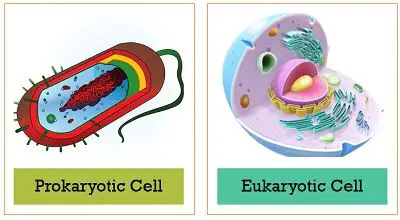
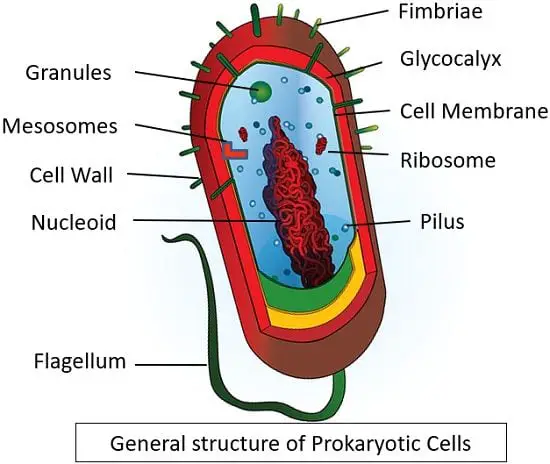
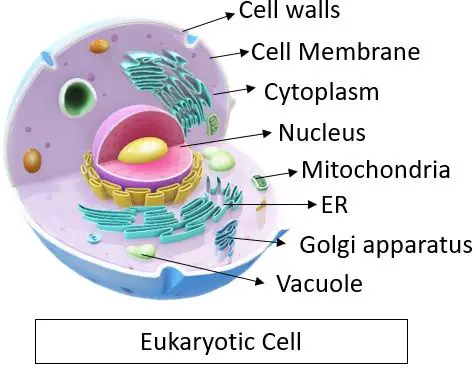
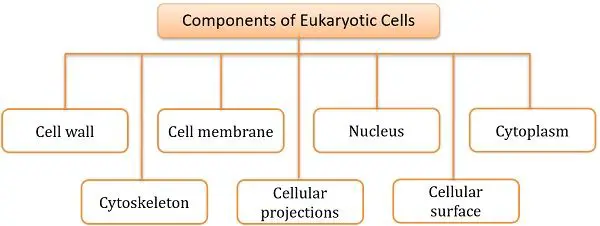
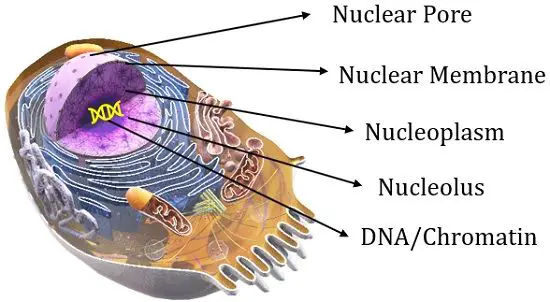
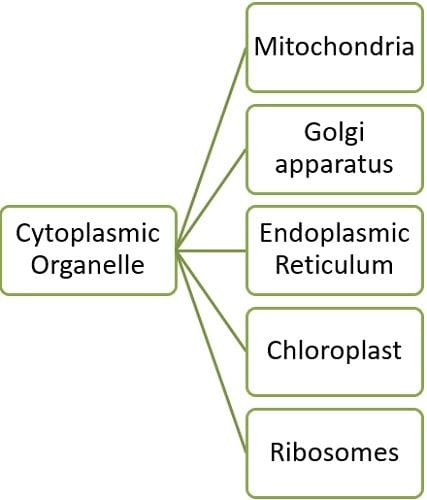
frank zvakavapano says
helpfull
santosh guptha says
Super Article
Sudesh says
Thanks
Wanteikupar lyngkhoi says
very good article and detailing
Hafsah Syed says
A really good comparision between both types of cells…
Well explained.
Tagore says
Very helpful
Santosh Dewangan says
Thanks for sharing it greatly helped me to understand these two types of cells for my exams…
myrbsenotes says
Good job
gulshan says
good and handy well-mentioned differences………….really appreciable
Rishikes Dhage says
Thanx
Is a very important
Atanu says
Vry good differences….. It hlpd me a lot
Bikram sahu says
Thanks , It maybe helpful all students. Because it is easily understand.
Bikram sahu says
It is easily understand .So many many thanks for you.
josphat ekisa says
wow, this is awesome
Debarghaya Mitra says
Very good one.
Richu says
This really helped me lot
Kiran says
Nice things are given in that article
Muhammad Tayyab says
This is awesome and very help – full
Sourav says
Really helpful article,,
AIMEN ASHER says
It is really different from the differences on any other website. Really a great job. Thumbs up for the effort.
Nadeem saqib says
Very good artical may you live long
akshara singh says
much better than other websites..😌👍🏻